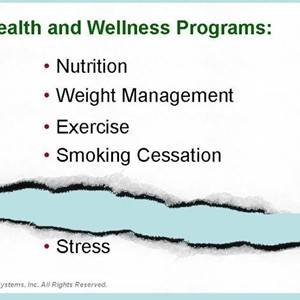The Big Lie – Health and Wellness Programs Address Stress

As a stress and resiliency analytics expert working with global organizations, I feel compelled to talk about one of the greatest myths in the workplace that’s costing U.S. employers $300 billion* annually.
Everywhere I go, when I ask company leaders what they are doing to address employee stress, I hear the same thing, “Oh we offer a health and wellness program to all our people and it handles stress.”
There’s the lie. Not intentional, but misleading nonetheless. Because if companies were doing a good job with stress, then their people would be healthier, more productive, more attentive and able to harness their creative energies. Instead:
Stress is (still) the number one workforce risk issue in the workplace globally. It ranked above lack of physical activity and obesity. In fact, it ranked higher than smoking, substance abuse and poor nutrition.**
Nearly eight in 10 (78%) companies identify stress as a top workforce risk issue, but employers and employees have vastly different opinions on the causes.**
Only 15% of employers identify improving the emotional/mental health (i.e., lessening the stress and anxiety) of employees as a top priority of their health and productivity programs.**
Some 83% of American workers say they feel stressed out by their jobs, up from 73% in 2012***
Companies hope that employee stress is being handled by the health and wellness programs they already offer. Not so. Despite decades of traditional health and wellness programs targeting what’s known as The Big Four of Health Promotion: nutrition, weight control, exercise, and smoking cessation, stress is a bigger issue than ever. And the skyrocketing healthcare costs associated with obesity, inactivity, stress related illness, and other expensive problems like depression and anxiety, are often outcomes of poor stress management, rather than root causes. That’s how companies end up spending big bucks treating symptoms. It’s like an exterminator who removes the mice but doesn’t patch the hole where they got in. So after forty years of these types of programs being in place, stress is still a big workplace issue. A pervasive, expensive, “but what can we do about it?” problem.
So what are they doing wrong? First, they lump stress under the health and wellness category, and focus on the physical symptoms, with little regard for its unique, contributory facets to productivity, overall performance, engagement, and poor interactional patterns of decision making, communications, and motivation.
Another important thing they do wrong is to ignore the majority of their population that current day health and wellness programs are not addressing. How do The Big Four programs help healthy weight, physically fit, non-smoking employees who have a lot of stress? They don’t.
Further, stress contributes greatly to employee disengagement, a workplace issue costing U.S. businesses $450 to $550 billion per year, according to Gallup Inc.’s 2013 State of the Global Workplace survey. And that’s also not being addressed by health and wellness programs.
It’s critical, and way overdue, for organizations to look at workplace solutions that specifically target stress and build resiliency. If they continue to ignore stress in all of its forms, emotional, mental, and behavioral, in addition to the physical, or to shove it under the catch-all of health and wellness, their healthcare costs will continue to rise, overall performance will drop and talent will leave. Most frustratingly, people will continue to suffer from this measurable and manageable current day issue. And you’ll read about this again in next year’s studies.
*World Health Organization
**2013/2014 Towers Watson Staying@Work Survey, conducted by Towers Watson and the National Business Group on Health
*** 2013 Work Stress Survey, conducted by Harris Interactive for Everest College
Originally posted on April 16, 2014
©2022 Essi Systems, Inc. All rights reserved.